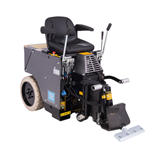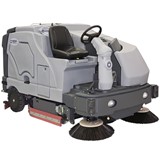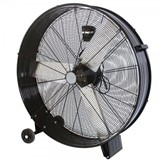Key takeaways
- High turnover is costly: Replacing skilled machine operators can cost Australian manufacturers up to $60,000 per role, factoring recruitment, training, and lost productivity (Manufacturing Skills Australia).
- Retention starts with engagement: Employees leave due to poor workplace culture, lack of development, and unclear career paths, not just pay.
- Training and upskilling matter: Providing structured skills development, certifications, and cross-training increases loyalty and operational efficiency.
- Recognition and workplace culture: Regular feedback, safety recognition, and team involvement significantly reduce attrition.
- Flexible rostering and mental health support: Shift workers benefit from predictable schedules, fatigue management, and wellbeing programs, which improve retention and productivity.
- Regulatory compliance and safety considerations: Ensuring your workplace meets Safe Work Australia standards not only reduces legal risk but also boosts operator retention by creating a safer, more valued work environment.
- Cost-benefit analysis of retention strategies: Investing in training, recognition, and wellbeing initiatives for your operators delivers measurable savings by lowering turnover costs while enhancing productivity and morale.
Introduction: The industrial skills crisis and why operators matter
Australian industries are facing an unprecedented skills shortage. According to the National Skills Commission, skilled trades roles, including machine operators, are in high demand, and the shortage is expected to worsen through 2025.
For manufacturers, logistics hubs, and industrial plants, machine operators are the backbone of production. Losing even one experienced operator can disrupt schedules, reduce efficiency, and increase costs. Understanding why operators leave and implementing practical strategies to retain them is critical to operational success.
Why your best operators leave
Skilled operators are valuable because they combine technical knowledge with years of on-the-floor experience. However, several factors contribute to turnover:
- Limited career progression: Operators often feel “stuck” with no clear path to leadership, specialist roles, or higher pay.
- Monotonous or unsafe work: Repetitive tasks and inadequate safety measures increase dissatisfaction and burnout.
- Inadequate training and support: Lack of investment in skills development leaves operators feeling undervalued.
- Poor workplace culture: Negative team dynamics, poor communication, or lack of recognition erodes loyalty.
- Pay and benefits: While not always the primary factor, competitive wages, overtime policies, and shift allowances influence retention.
Example: A metal fabrication plant in Melbourne experienced a 15% turnover in six months after failing to provide structured upskilling or a recognition program. When management implemented targeted training and monthly safety awards, attrition dropped to 5% within the next year.
The business cost of operator turnover
Replacing skilled machine operators is expensive:
- Recruitment: Advertising, agency fees, and interview time can cost $5,000–$10,000 per hire.
- Training: New operators require hands-on guidance and mentoring, which can cost $15,000–$25,000 per operator.
- Lost productivity: New staff often operate at reduced efficiency for weeks, impacting output and deadlines.
Statistics: Research by Manufacturing Skills Australia suggests turnover of key operators can cost companies $50,000–$60,000 per position, including hidden productivity losses.
Practical strategies to retain machine operators
1. Provide structured training and upskilling
Investing in your operators’ skills pays off:
- Offer certifications in equipment operation, safety, and maintenance.
- Cross-train staff across different machines or departments to reduce monotony.
- Provide access to technical workshops or apprenticeships.
Example: A Queensland logistics operator introduced a cross-training program. Staff rotated weekly between forklifts, packing, and warehouse systems. Engagement scores increased, and retention improved by 20%.
2. Recognise performance and create a positive culture
Recognition and culture are major retention drivers:
- Celebrate safety milestones, high productivity, and problem-solving initiatives.
- Implement peer-to-peer recognition schemes.
- Encourage team involvement in workflow decisions.
Example: A Sydney-based factory introduced a “Operator of the Month” program with a small financial bonus and public recognition. Staff reported feeling more valued and motivated, reducing voluntary departures.
3. Offer career progression pathways
Operators want to see a future:
- Clearly define roles and potential advancement (senior operator, team leader, or maintenance specialist).
- Link pay increases and promotions to skill acquisition and performance metrics.
- Provide mentorship programs pairing junior operators with experienced staff.
Statistic: The Australian Industry and Skills Committee notes employees with a defined career path are 50% less likely to leave within the first two years.
4. Implement flexible rostering and wellbeing initiatives
Shift work can be physically and mentally demanding:
- Use predictable shifts with adequate breaks to manage fatigue.
- Offer flexible scheduling for life commitments when possible.
- Introduce mental health support and EAP programs.
Example: A mining operator in Western Australia revised shift rotations to forward-rotating schedules, added mandatory breaks, and launched a wellbeing program. Fatigue-related incidents dropped by 30%, and turnover decreased significantly.
5. Ensure competitive pay and benefits
While not the only factor, remuneration matters:
- Benchmark wages against industry standards using Australian Fair Work Commission guidelines.
- Provide overtime pay, shift allowances, and performance incentives.
- Consider small perks like health insurance contributions or wellness programs.
Example: A food processing plant in Victoria increased overtime rates and added annual bonus targets tied to machine uptime. This simple change reduced staff resignations by 40% in one year.
Using data and feedback to drive retention
To retain operators effectively, data and feedback are essential:
- Track turnover trends by department, shift, and supervisor.
- Conduct exit interviews to understand reasons for leaving.
- Use engagement surveys to identify pain points.
- Apply insights to roster design, training, and reward programs.
Tip: Integrating workforce management software can automate this tracking, providing actionable insights to HR and operations teams.
Regulatory compliance and safety considerations
Regulatory compliance isn’t just about avoiding fines, it plays a major role in keeping your best operators on board. Workers who feel safe are more likely to stay, while unsafe workplaces are a top driver of turnover in the industrial sector.
In Australia, Safe Work Australia provides the framework equivalent to OSHA in the U.S., covering areas like machinery operation, fatigue management, and general workplace safety. Compliance ensures your operators know the rules are clear, and they see that management genuinely cares about their wellbeing.
Practical implementation tips:
- Safety audits: Schedule regular audits to ensure all equipment is correctly maintained, guards are in place, and procedures are followed.
- Mandatory training: Ensure all operators complete accredited courses for high-risk machinery, including refresher training annually.
- Fatigue management: Adhere to guidelines on shift lengths, breaks, and monitoring to prevent overwork.
- Safety reporting: Encourage operators to report hazards and near misses, with a system that tracks follow-up actions.
Example: A Victorian manufacturing facility implemented monthly safety audits and mandatory forklift training for all operators. Within six months, near-miss incidents dropped 40%, and voluntary turnover decreased by 15%.
Cost-benefit analysis of retention strategies
High turnover is expensive. In Australian manufacturing, replacing skilled operators can cost 30–50% of their annual salary, including recruitment, training, and lost productivity. Investing in retention strategies, training, recognition, and wellbeing programs, can quickly outweigh the cost of turnover.
Hypothetical scenario:
Facility: 50 operators, average salary $70,000, turnover rate 10% per year. Cost of turnover: 5 operators × $35,000 replacement cost = $175,000 annually. Retention investment:
- Annual training budget: $50,000
- Recognition and rewards: $15,000
- Wellbeing initiatives (e.g., fatigue management, mental health support): $20,000
- Total investment: $85,000
Net benefit: $175,000 – $85,000 = $90,000 saved per year, not including intangible benefits like improved morale, productivity, and safety compliance.
Practical tips:
- Track the ROI of individual programs (e.g., training completion vs. error rates).
- Combine recognition initiatives with safety incentives to reinforce positive behaviour.
- Tailor wellbeing programs to shift workers, including fatigue management and flexible scheduling where possible.
Conclusion: Retaining your most valuable operators
Machine operators are critical to Australian industrial operations. Losing skilled staff disrupts productivity, increases costs, and reduces morale. By focusing on training, culture, recognition, flexible rostering, and competitive remuneration, employers can retain top talent and build a resilient, high-performing workforce.
Investing in your operators isn’t just about reducing turnover, it’s about maximising operational efficiency, maintaining safety, and securing long-term business success
















